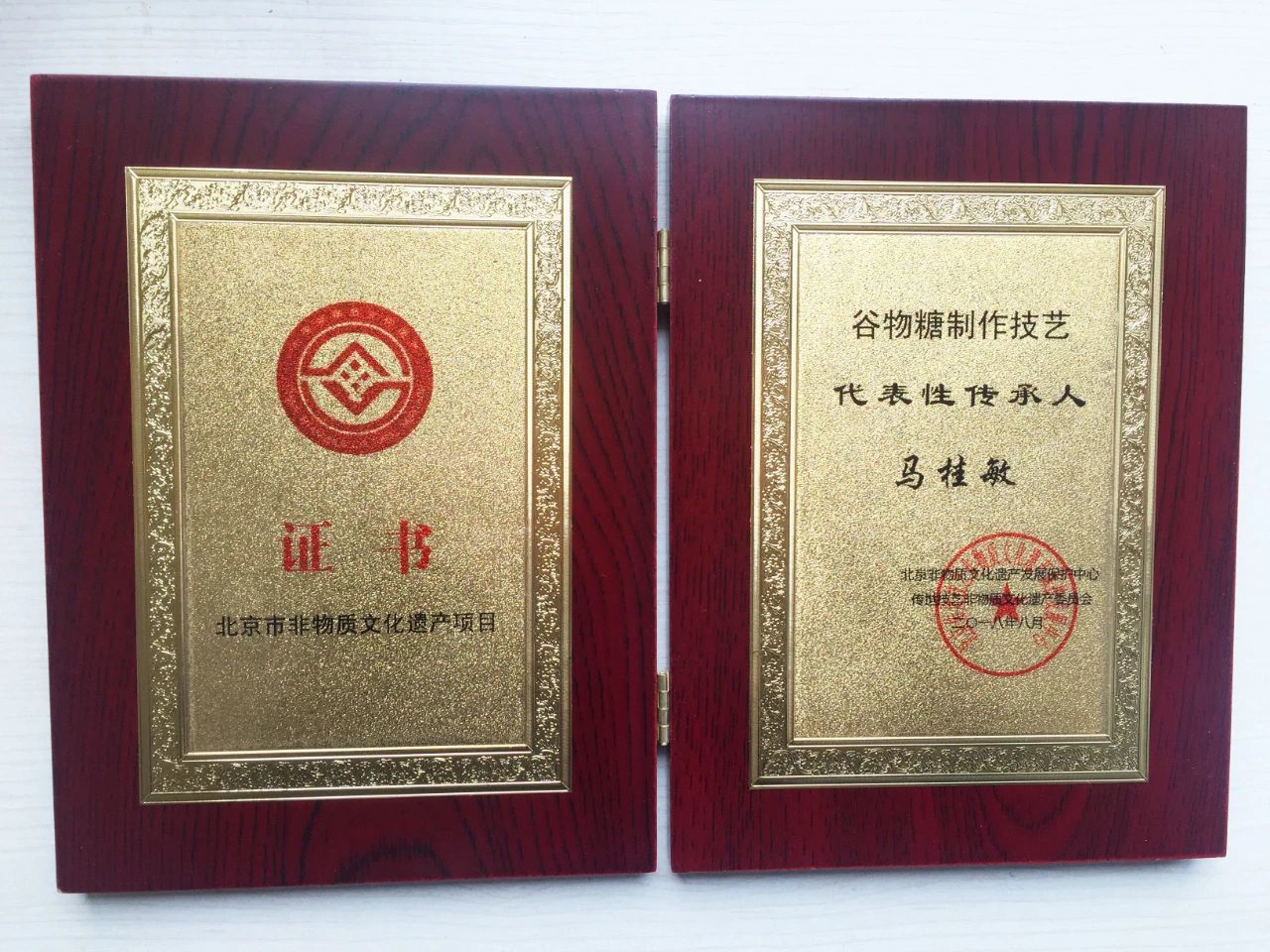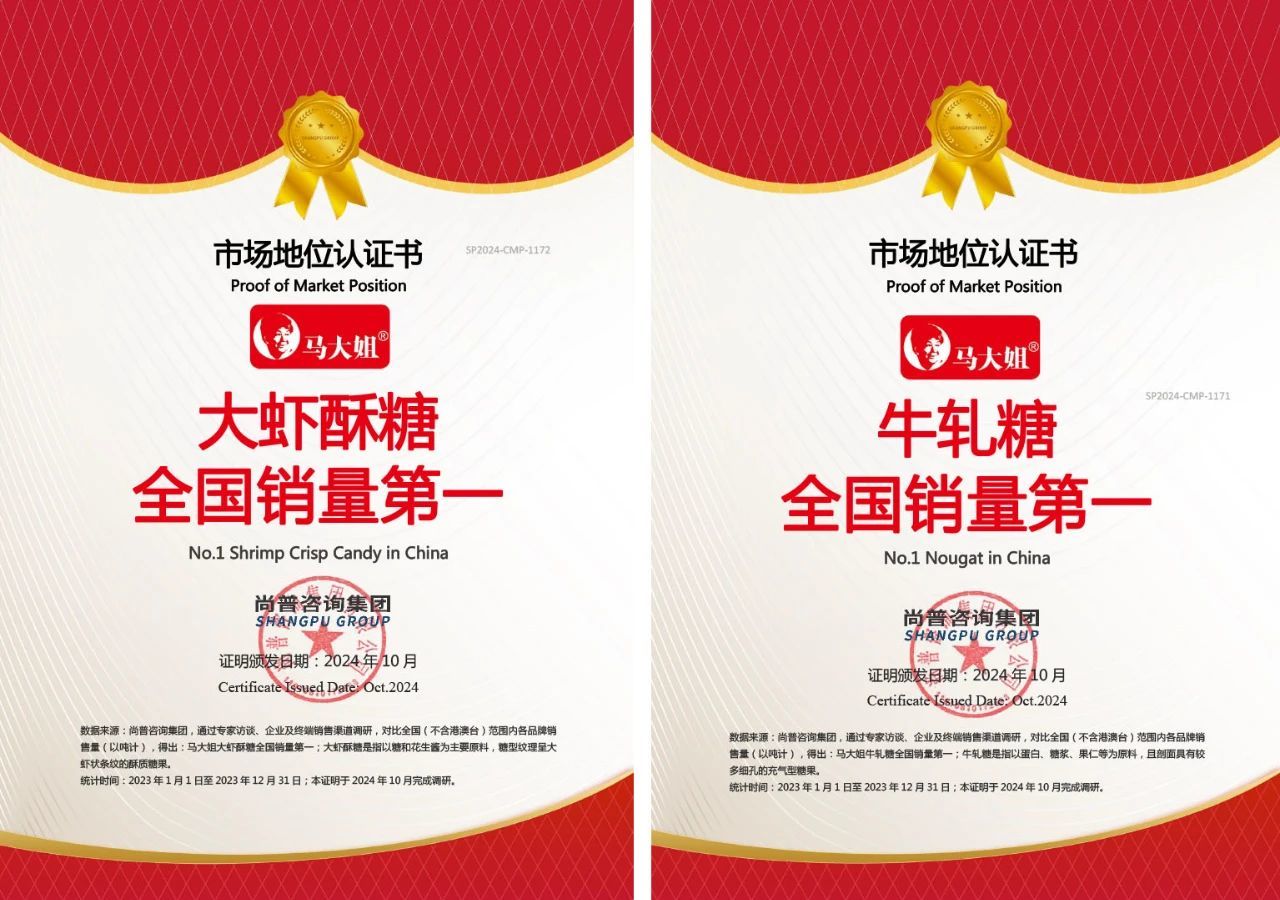Non-heritage from a brand perspective: National brand Madajie wins "double first"
12/31
2024
At the end of 2024, a year full of vitality and transformation, we look back at the time for thought that AI, new energy, and new quality have brought us. Whether it's the box office champion "Hot and Spicy" with 3.46 billion views, the countless hot searches following "Black Myth: Wukong"'s tour of Shanxi, the highly eye-catching Xiaomi SU7 and the extraordinary Huawei three-fold phone, or Li Ziqi's return after three years, collaborating with intangible cultural heritage "lacquer art" and "Shu embroidery" to once again top domestic and international social media; more people have seen the widespread influence of Chinese culture and technology.

As the New Year approaches, the Intergovernmental Committee for the Safeguarding of the Intangible Cultural Heritage of UNESCO has inscribed "Spring Festival—the social practice of the Chinese people celebrating the traditional New Year" on the Representative List of the Intangible Cultural Heritage of Humanity, giving the Chinese people an early "New Year's gift." China's intangible cultural heritage has truly flourished in 2024, bearing fruit in every corner of the world.
Intangible cultural heritage is admired worldwide, with intangible cultural skills repeatedly stunning the world. It's worth considering whether international brands incorporating intangible cultural heritage with distinct Chinese characteristics into their products signals an opportunity for Chinese brands to enter the international stage, riding the wave of intangible cultural heritage? Especially in today's era of abundant brands, like France's luxury goods culture and its status as a national pillar industry, infusing intangible cultural heritage into brands, empowering each other, could this form another virtuous cycle for the Chinese economy, producing a win-win situation?

Today, starting from Beijing, the "ancient capital of six dynasties," we use food as a starting point to explore the symbiotic value of China's intangible cultural heritage, brands, and the economy.
Beijing's Intangible Cultural Heritage
Food Plays a Major Role
What is Intangible Cultural Heritage? "Intangible cultural heritage" refers to the practices, representations, expressions, knowledge, skills—as well as the instruments, objects, artifacts and cultural spaces associated therewith—that communities, groups and, in some cases, individuals recognize as part of their cultural heritage. Intangible cultural heritage is an important component of the expression of the world's cultural diversity.
Among them, Beijing, as the capital, is one of the provinces and cities with the richest intangible cultural heritage. According to data, Beijing currently has 103 national-level representative projects, 273 municipal-level representative projects, and 909 district-level

representative projects. How much does this vast intangible cultural heritage contribute to Beijing's economy? Reports show that to ensure cultural diversity, intangible cultural heritage protection is one of the focuses of Beijing's cultural preservation efforts. In the past three years, the Beijing Municipal Government has allocated more than 56 million yuan in funds to the Municipal Bureau of Culture and Tourism for intangible cultural heritage work. How to transition from external support to the true inheritance and promotion of intangible cultural heritage, fundamentally alleviating the "modern dilemma" of intangible cultural heritage, taking international brands as an example, seeking market survival space through brand building may become one of the important ways to revitalize intangible cultural heritage.
It is worth mentioning that "food," as the sector most closely linked to people's livelihood, plays a major role in the symbiotic expression of intangible cultural heritage brands and economic development. Taking Beijing as an example, food brands with intangible cultural heritage skills, such as Quanjude, Donglaishun, and Madajie, are highly active in the market. These food brands have traversed the long river of history, winning with their "taste," captivating generations of domestic and foreign consumers, honing their intangible cultural heritage skills while becoming a strong stroke in the portrayal of "Chinese taste," "Chinese culture," and "Chinese history."

The "Heritage" in Intangible Cultural Heritage
Focuses on Craftsmanship and Resilience
Concerning craftsmanship and artistry, looking at the whole country, how could Chinese cloisonné, the four great famous embroideries, and Miao silver forging techniques be defeated? Taking cloisonné, the pinnacle of traditional Chinese craftsmanship, as an example, its complex processes, diverse elements, and exquisite finished products have attracted countless fans. One intangible cultural heritage enthusiast once said, "I find the cloisonné process fascinating, especially the cloisonné part, which is a process of perseverance."
Food intangible cultural heritage processes also have a similar effect. For example, the national brand Madajie, a small candy, holds three intangible cultural heritage projects: liquor candy frost making techniques, grain candy making techniques, and crispy candy making techniques. The meticulous and exquisite craftsmanship of Chinese intangible cultural heritage is perhaps only limited by our imagination.

Taking the intangible cultural heritage technique—crispy candy making—as an example, it is introduced that in the production of crispy candy, meticulous raw materials and exquisite craftsmanship are required to perfectly reproduce the national taste that has been popular for 40 years. To achieve the crispy texture of the outer skin, the candy body needs to undergo repeated stretching with precise force, then cut into 3 sections, and spliced to form 24 clear striped outer skins, finally forming a crispy thin skin of about 0.1 mm, so that the taste can be crispier and non-sticky.
The exquisite intangible cultural heritage handicraft skills are the result of Madajie founder Ma Guimin (known in the industry as Madajie) inheriting from Wu Lei (first generation) and Wu Qilong (second-generation successor), and Sui Shoujing (third-generation successor), and actively innovating multi-dimensional advancements such as the observation method of crispy candy bubbles and open-fire sugar-boiling technology, decades of adherence to inheritance and innovation.

The "Opportunity" in Intangible Cultural Heritage
Lies in Seizing the Moment
Whether it's cloisonné or Madajie's crispy candy making process, they are representative works of Chinese intangible cultural heritage and the pursuit of peak craftsmanship in their respective fields by the Chinese people.
However, how to transform intangible cultural heritage into a "new economy" of intangible cultural heritage, giving new value and seeking new and vast space for these living treasures accumulated over thousands of years of Chinese history, allowing intangible cultural heritage to truly "come alive"?

Modern consumers value experience, brands, and quality. What is intangible cultural heritage lacking?
In terms of exquisite craftsmanship, intangible cultural heritage provides a high level of satisfaction, but in terms of branding, generally speaking, Chinese intangible cultural heritage has a distinct regional attribute, but its brand attribute is somewhat lagging. However, in recent years, based on its hard power, the efforts of intangible cultural heritage brands have become increasingly apparent.
Recently, Shangpu Consulting Group released data indicating that the candy brand Madajie achieved "No. 1 in national sales" for its nougat and shrimp-shaped crispy candy products, which incorporate intangible cultural heritage techniques. Shangpu Consulting Group, through expert interviews and surveys of corporate and retail sales channels, compared the sales volume (in tons) of various brands nationwide (excluding Hong Kong, Macau, and Taiwan) and concluded that Madajie nougat and Madajie shrimp-shaped crispy candy ranked first nationally. Nougat is an aerated candy made from egg white, syrup, nuts, etc., with numerous small pores in its cross-section. Shrimp-shaped crispy candy is a crispy candy primarily made from sugar and peanut butter, with a texture resembling shrimp stripes. Statistical period: January 1, 2023, to December 31, 2023; this report was completed in October 2024.

Madajie's products related to intangible cultural heritage techniques enjoy strong market recognition, representing a powerful expression of modern consumers' affirmation of intangible cultural heritage. This, in turn, is a more effective way to protect intangible cultural heritage.
Industry insiders frankly state that the "intangible cultural heritage boom" may be temporary, but if intangible cultural heritage can seize opportunities and forge its own unique competitiveness, this will also be an important support for its inheritance. However, riding the wave of success requires intangible cultural heritage brands to demonstrate comprehensive strength, including strategic planning.
“As consumer demand in the food market becomes increasingly diversified, with an ever-growing variety of product categories, Madajie Food focuses on and meets consumer needs with a richer product portfolio. In 2025, Madajie will have greater investment in product development, larger investments in brand marketing, and wider market access! We will continuously innovate and explore, working together with our customers for mutual success,” said Miao Yinghui, CEO of Madajie Company.

Only by daring to break new ground can one preserve intangible cultural heritage. This is true for Madajie, and it is also true for countless holders of intangible cultural heritage. By adopting a form more suitable for modern consumption, these ancient and refined living treasures are reshaped into a "new economy" of intangible cultural heritage. Leveraging the high international recognition of intangible cultural heritage today, China's intangible cultural heritage is poised to ride the wave of success.
Zhaoquanying Town, Shunyi District, Beijing, China

